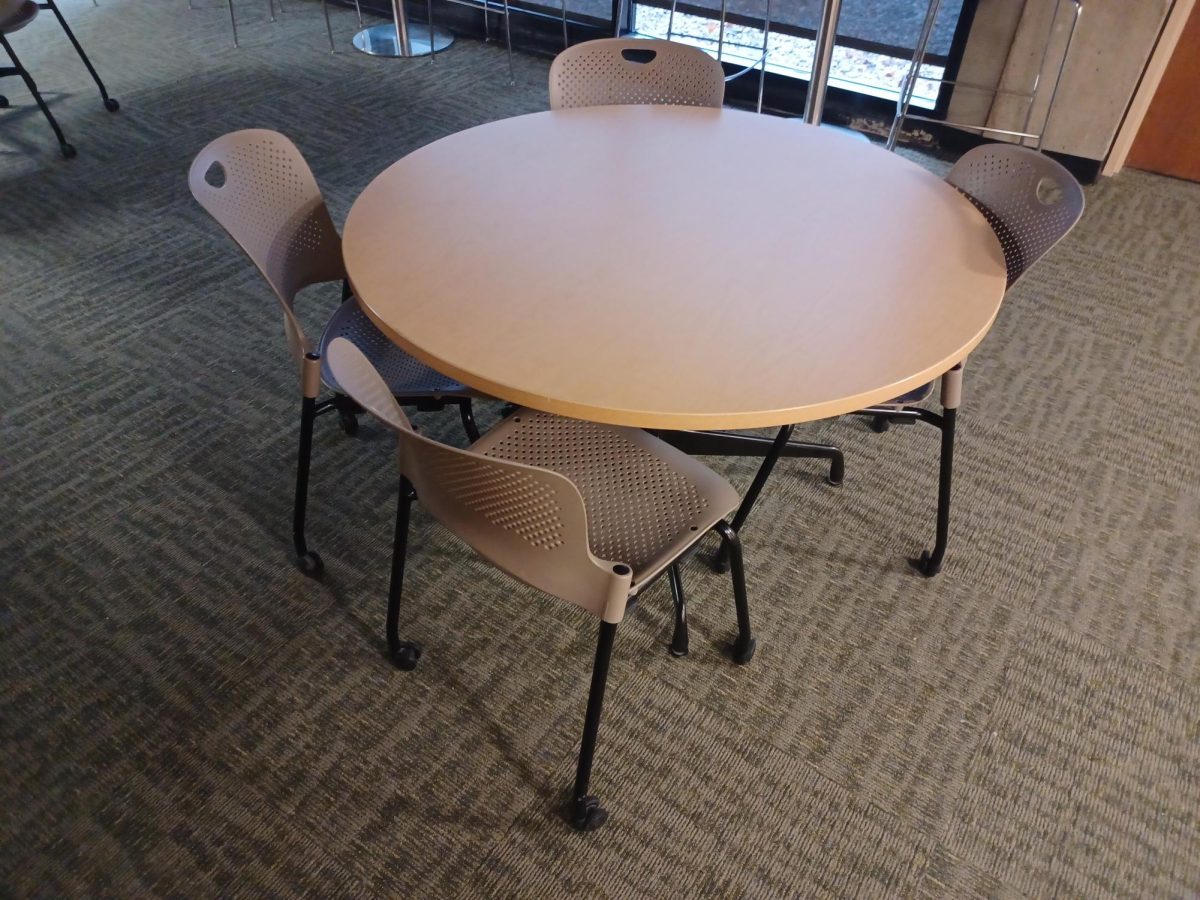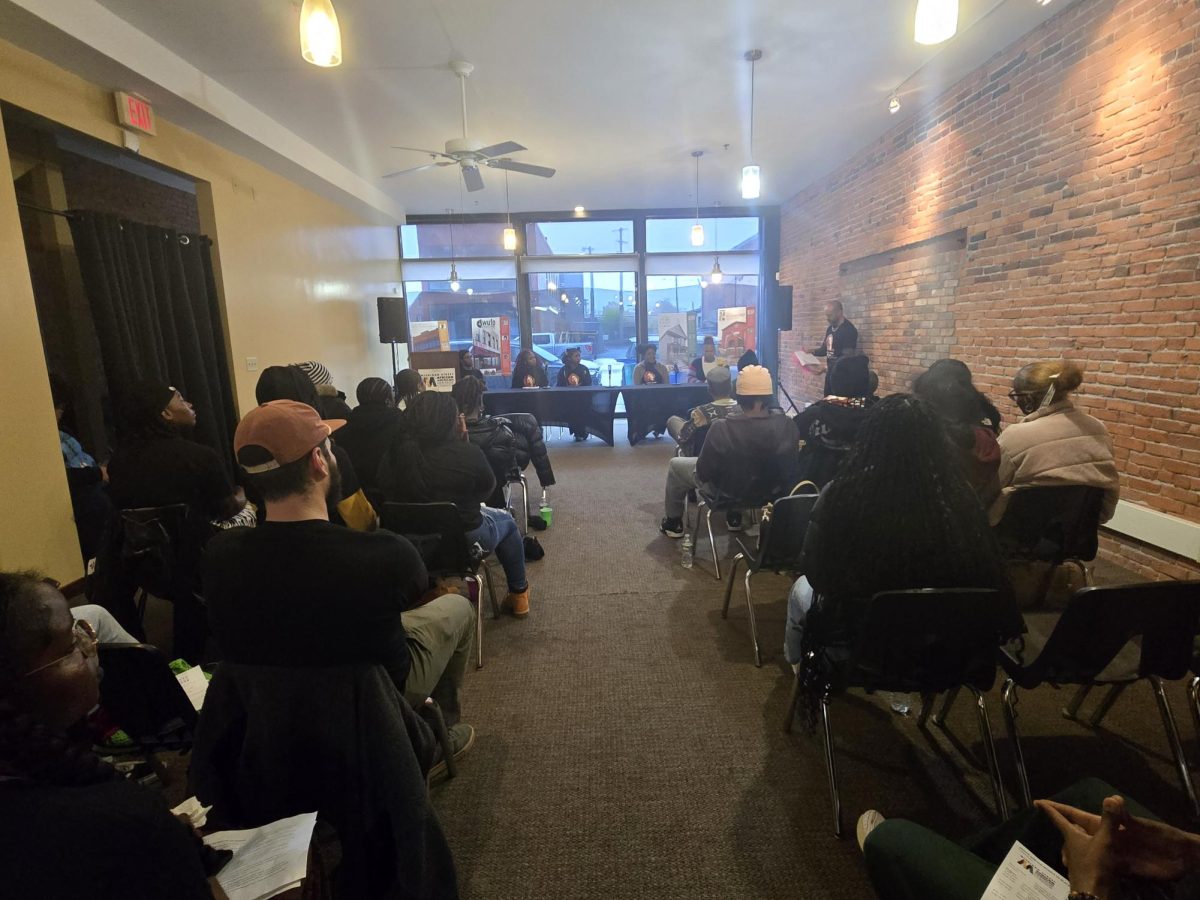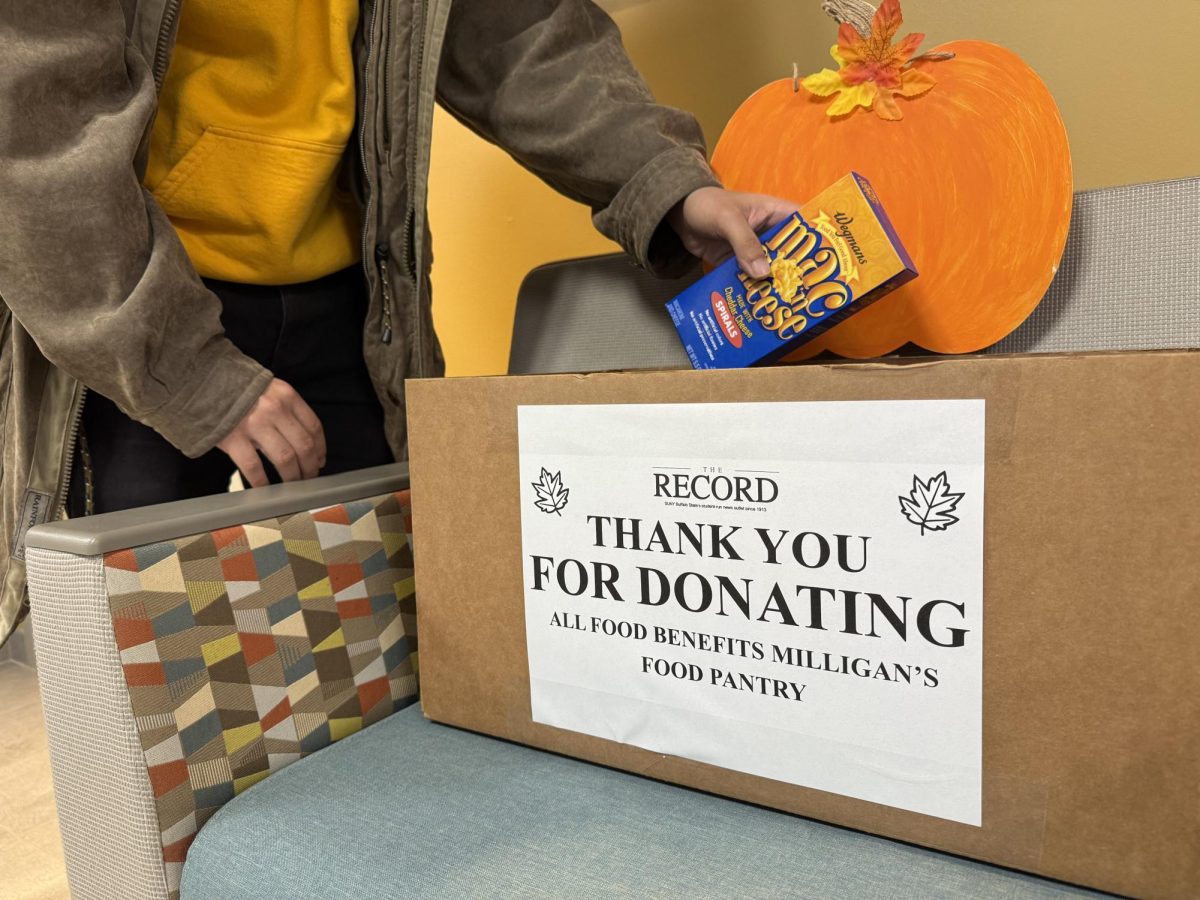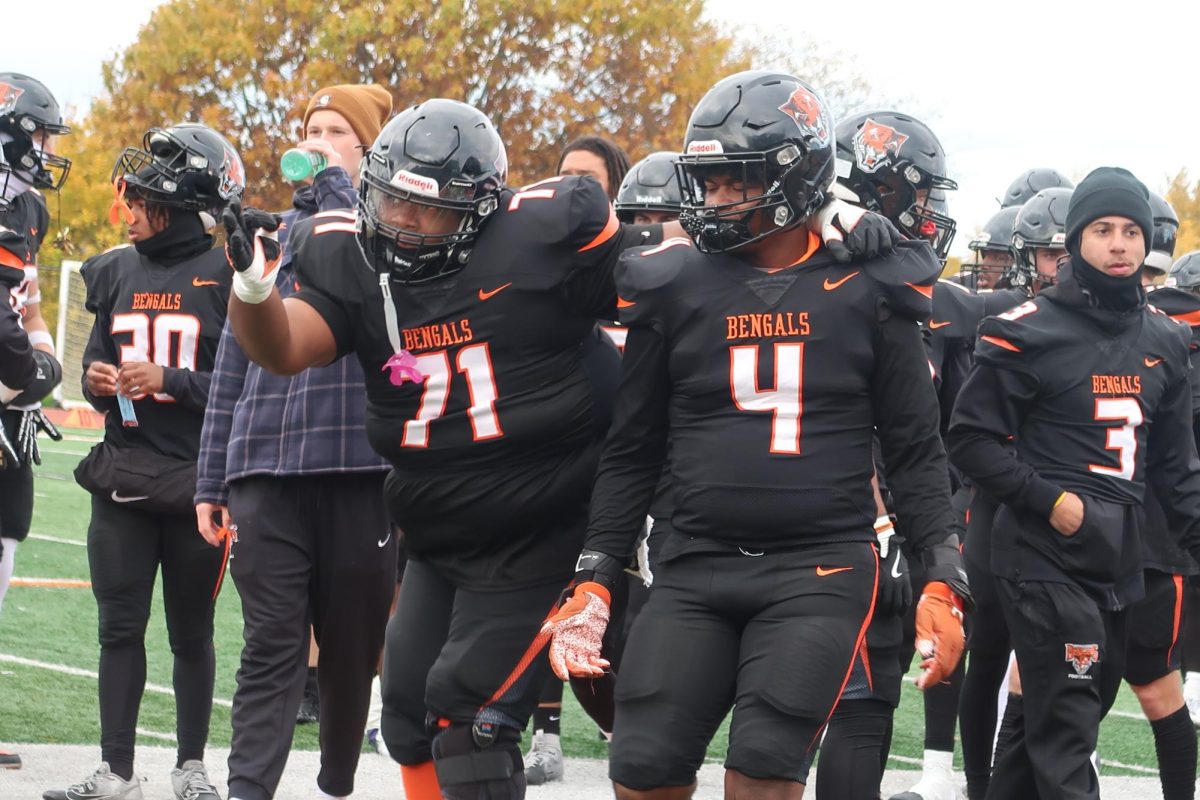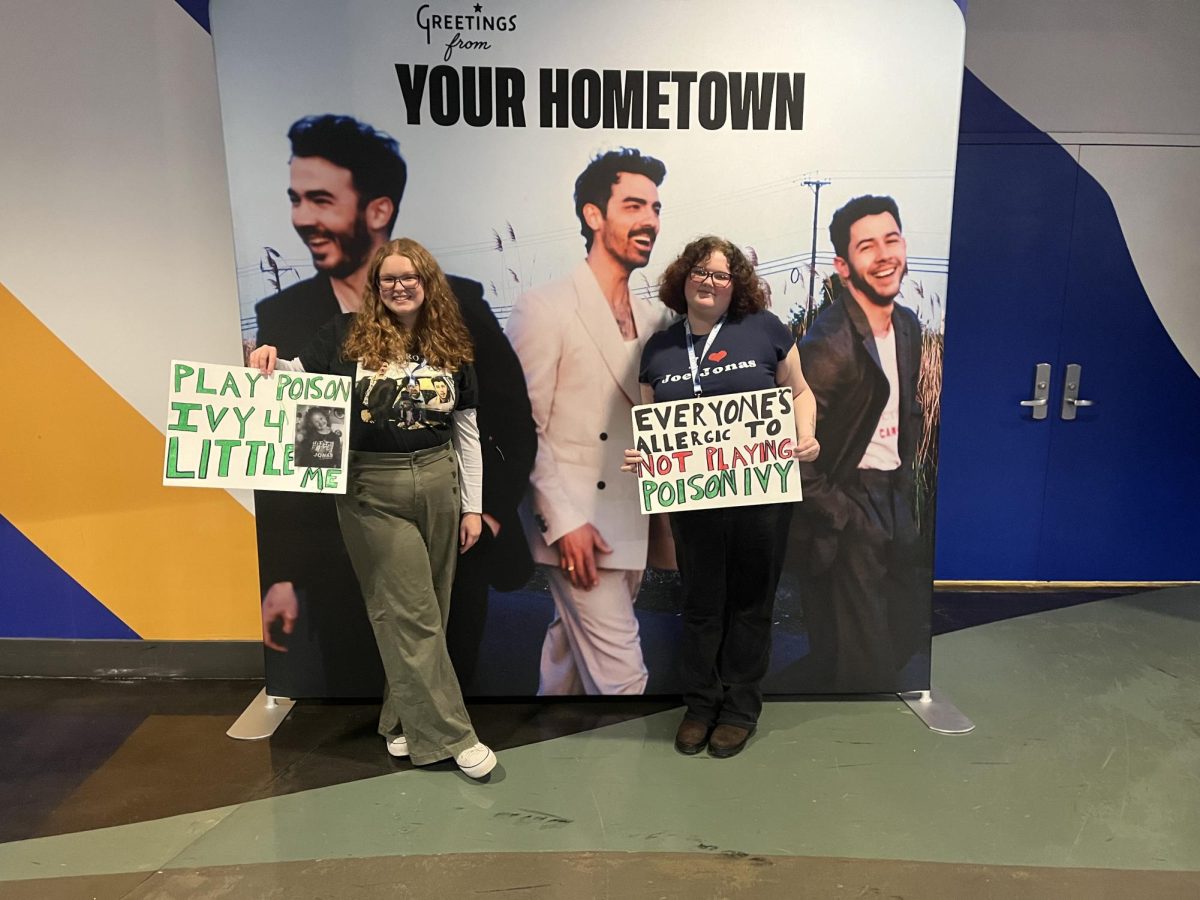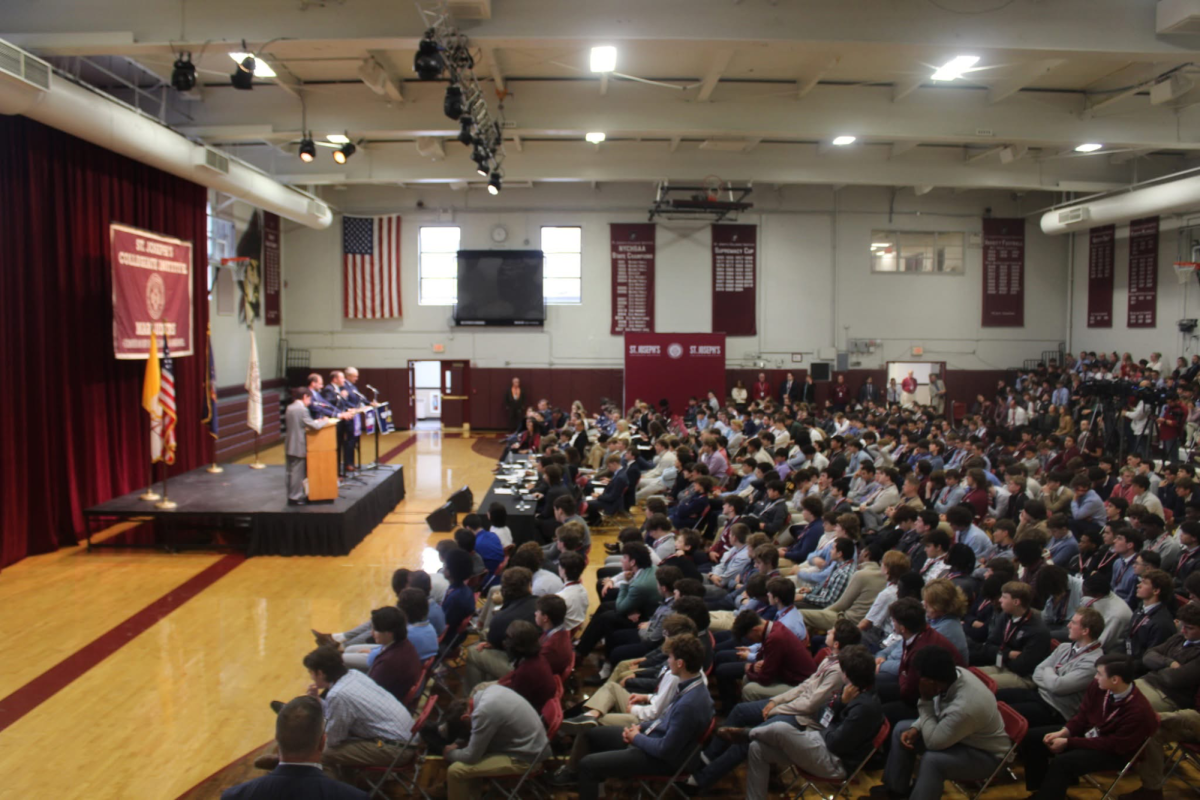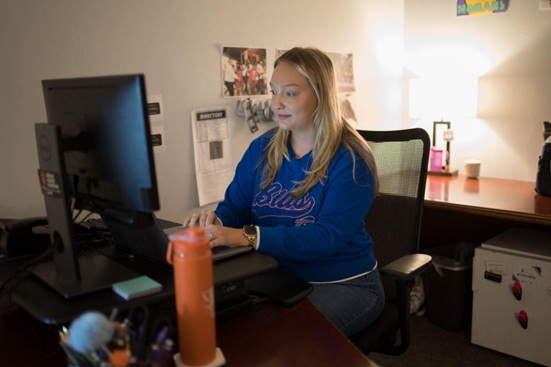When someone utters the phrase “student conduct office”, what thoughts enter your mind? Some may associate the Student Conduct & Community Standards, or Judicial Affairs, with the office that issues sanctions, or the office that sends out scary conduct charge letters.
Student Conduct & Community Standards, or Judicial Affairs, is an office at Buffalo State University that upholds the Code of Conduct and promotes a culture of accountability, respect, and humanity. Echoing a broader push for restorative measures, Buffalo State’s Judicial Affairs office is working tirelessly to utilize restorative justice. Although justice is a term used often, many people might not be able to exact a true definition of justice (besides the dictionary definition). With this in mind, it can be hard to imagine that justice could simply be the state of respecting other people and the community. Restorative justice embodies the idea that people should respect each other and the greater community. Conflicts are inevitable. However, resolving conflicts through collaboration and communication is an effective approach to restoring humanity among the parties involved.
Associate Dean Janelle Brooks shares her insights into the world of Judicial Affairs at Buffalo State University and provides a glimpse into restorative justice and the benefits of such an approach.
The interview was edited to increase clarity and brevity.
What is the goal of restorative justice? Why might some colleges be moving toward restorative justice and other non-punitive measures for some conduct violations?
The goal of restorative justice is to help individuals identify where harm has happened and to collectively work together to repair that harm. I think that a lot of colleges might move to utilize it in some cases because it allows for deeper discussion, understanding, and for the individuals that are involved, they almost control the process in terms of what the outcome and resolution will be, whereas in more standard punitive measures and processes, there is a different entity that controls what the outcome will be. In the best cases, it is more impactful because the individuals who have created the disruption are able to work together to ensure that they have a reasonable resolution to ensure that type of disruption doesn’t happen again in the future.
This isn’t applied to every scenario. It’s not necessarily an easy route; it is sometimes difficult for folks to acknowledge that they’ve done something wrong, that they’ve harmed someone, or that the interaction has impacted an entire community. Some people are more comfortable with being told what they did wrong and being assigned a sanction.
With restorative justice, everyone has to be willing to take part in it, and that’s not always possible. Sometimes, you do have to use standard punitive measures, which encompass educational things as well, when folks are not able to come to the table to make the decision to use restorative justice.
How might restorative justice differ from more traditional conduct processes? Generally speaking, when might the use of restorative justice be appropriate?
Within our punitive process, individuals have the opportunity to have a discussion about what has taken place. We’re making a determination about the most appropriate sanction. With restorative justice, everyone who’s involved or everyone who’s impacted has the ability to be at the table to be able to discuss the potential outcome. When it works well, it’s more impactful because folks are able to see the trickle down or a domino effect. For example, a student who activates the fire alarm because they’re not paying attention when they’re cooking in a residence hall: we would have a restorative circle to talk about the types of things you have to pay attention to. An alarm going off at 11:00 at night during finals week impacts other members in the community and people need to be mindful of those types of things.
When individuals get into conflicts, and they aren’t aware of the root issue of the conflict, restorative Justice, having circles, and opportunities for conversation allows them to identify that perhaps it was a misunderstanding that folks didn’t talk about and it kind of piled on top of each other. We see this in a lot of roommate conflicts; did you communicate to your roommate that you need to go to sleep at a certain time because you work the next day on certain days of the week? Folks identify that they didn’t have the conversation. Sometimes, avoiding conversation exacerbates conflict.
What specific restorative justice practices or models does the Judicial Affairs Office employ in resolving disciplinary issues?
For certain types of violations, before we send out the conduct charge letters, we’ll send the student a notification to say we recognize that something is taking place, and we believe this might be a good fit for restorative justice. Here’s some information about what restorative justice is. And then the student can tell us if they want to use RJ to address that issue. A lot of it is related to conflicts. Sometimes, there are scenarios like theft: we do not get a lot of instances of this, but if a student takes something from the dining hall, that’s an opportunity for restorative justice with the student and maybe Chartwells to ensure that relationship is not impacted. Helping students understand that if you take something out of the dining hall, then it impacts what’s available for other students and/or could impact pricing.
Students may not necessarily have the skillset to communicate when conflict is involved. Folks think that the only method to address something that bothers them is an argument, and that is not the case. It’s to be able to communicate with someone and tell them that something makes you uncomfortable or something needs to be adjusted in a way that isn’t an argument. Folks can disagree, but there is a healthy way to have that conversation. Sometimes, students have relationships where they need assistance in communicating with one another about expectations and their boundaries, so we’re able to use it there as well.
How does Judicial Affairs foster a culture of respect, empathy, and understanding through restorative justice principles on campus?
We try to model that in the way we approach one another and students. Students may come in a little anxious when they have to have a conduct hearing: I always ask them “why are you anxious?”. I also ask, “what do you think is going to happen?” A student might respond with “I don’t know.” And I’ll respond with, “well, I can tell you this is how this will run: we’ll go over the report. you’ll tell me what happened as much as possible, and I want you to be honest and transparent about what took place.” The goal is to arrive at a resolution that ensures this doesn’t happen again, and that’s typically how we approach conversation with individuals.
In the RJ circles, we might have a normal conversation. We have open hours for the office. Some individuals may need to stop down because maybe they’re having a difficult day or maybe an RA or a CA have a roommate conflict that they need assistance with managing. We’ve tried to establish a way for them to be able to do that. We try to lead with how we approach things in that frame, on a day-to-day basis, and with all the things that we do, whether it’s the individual conduct hearing or having a conversation with students because not every report and or violation results in a hearing. For example, it could be talking about why it’s not a good idea to make popcorn at 3:00 in the morning and setting the microwave for 8 minutes. Being able to utilize those methods and embody those characteristics is important in our day-to-day work.
With the implementation of restorative justice and a push for a decreased use of punitive measures, has Judicial Affairs experienced any pushback or challenges? If so, what was the greatest challenge faced with the implementation of a restorative justice model?
Student Conduct & Community Standards didn’t really have pushback when we implemented the restorative justice model and the restorative Justice Center. At the time, Former President Catherine Conway Turner was very big on social justice and restorative justice. And, when I approached her and said I’d like to start an RJ center, I said I think this is a good way for us to be able to offer a different way to address things for students and she fully supported the idea. Not to say it was a challenge, but communicating to the institution about what it is and how we use it.
RJ focuses on everyday communication. It is an ongoing process. We need to have those conversations as frequently as possible, especially if we have new faculty and/or staff that are coming on board. Reaffirming the presence of restorative justice and how it’s able to be used, and the idea that it doesn’t have to be used in terms of conduct violations, it can be used with conflict. It can be used in ways to help people have a more collaborative conversation.
The Push Back Against Restorative Justice in the Criminal Justice Field
In the criminal justice field, there’s absolutely a lot of push back. The criminal justice system is set up to funnel people to prison. Utilizing restorative measures can only be impactful in areas where individuals acknowledge that they have caused harm. And if folks are not fully able to understand what that looks like, it makes it difficult for it to truly be impactful and for it to be successful. For violent crimes, it’s somewhat difficult for the family of a person who has suffered the loss of an individual to be okay with a restorative justice circle. It may not be something that they are okay with at the onset, but they’re okay with it when a person is being reintroduced to society. There are different ways in which it can be used. If you’re able to use it for some of the lower-level offenses, I believe that there is a less likely occurrence of those individuals having more serious violations and eventually returning. Reintegration is important, and it’s often not done effectively. If we have instances where students were suspended from the institution, we require that they participate in the reentry circle and reentry conversation because for whatever period they’ve been away from the institution, it’s important to discuss what the next steps are as they are planning to return. Ensuring that they have completed whatever their requirements are to be able to return and ensuring that they are returning with the intent to exhibit different behavior help to make sure that they have things set in place to complete their degree. If they were previously employed at the institution, we help get them set up with those types of things and giving wrap-around service. There was a reason that they had to be temporarily removed from the institution, but then when they come back, we ensure that they have all those things in place so that they can be successful. We don’t want to just let students return off suspension without a discussion with them. This is something that we’ve started doing over the last year and a half or so: have a conversation with students and make sure that they are in a great place when they’re looking to return.
Regarding the use of non-punitive measures, including restorative justice, what implications do you envision in the future in terms of disciplinary measures in student conduct?
In a perfect world, we would have an entity where it’s almost self-governing and our students are able to hold each other accountable. Ideally, they would be exposed to good ways to have conversations, approach conflict collaboratively, and have the skills to have good conversations about conflicts. My hope is to decrease the number of violations taking place. The necessity to apply RJ wouldn’t be as prevalent because those things are not happening. I would love a scenario where individuals are holding each other to a standard to have supportive communities, whether they’re on campus, off campus, and apply what they learn while they’re here as Buffalo State students to their day-to-day lives. In conduct, our day-to-day is to manage violations, and have conversations with students who may not make the best choices at a particular time. We consistently see a decrease where students are repeat violators. We noticed that the conversations we are having and the intervention we are taking are helping students make different choices, and so, they’re not repeating the same misconducts. As people, we will make mistakes and not make good choices, but the goal is to not make it habitual and have scenarios where you’re doing the same thing repeatedly. The data shows that we have folks who are learning. We have students that come in and tell success stories and/or students that become members of the board or become student leaders on campus after they’ve had an interaction. We know that they’ve learned, and they’ve been able to apply what they’ve learned.


